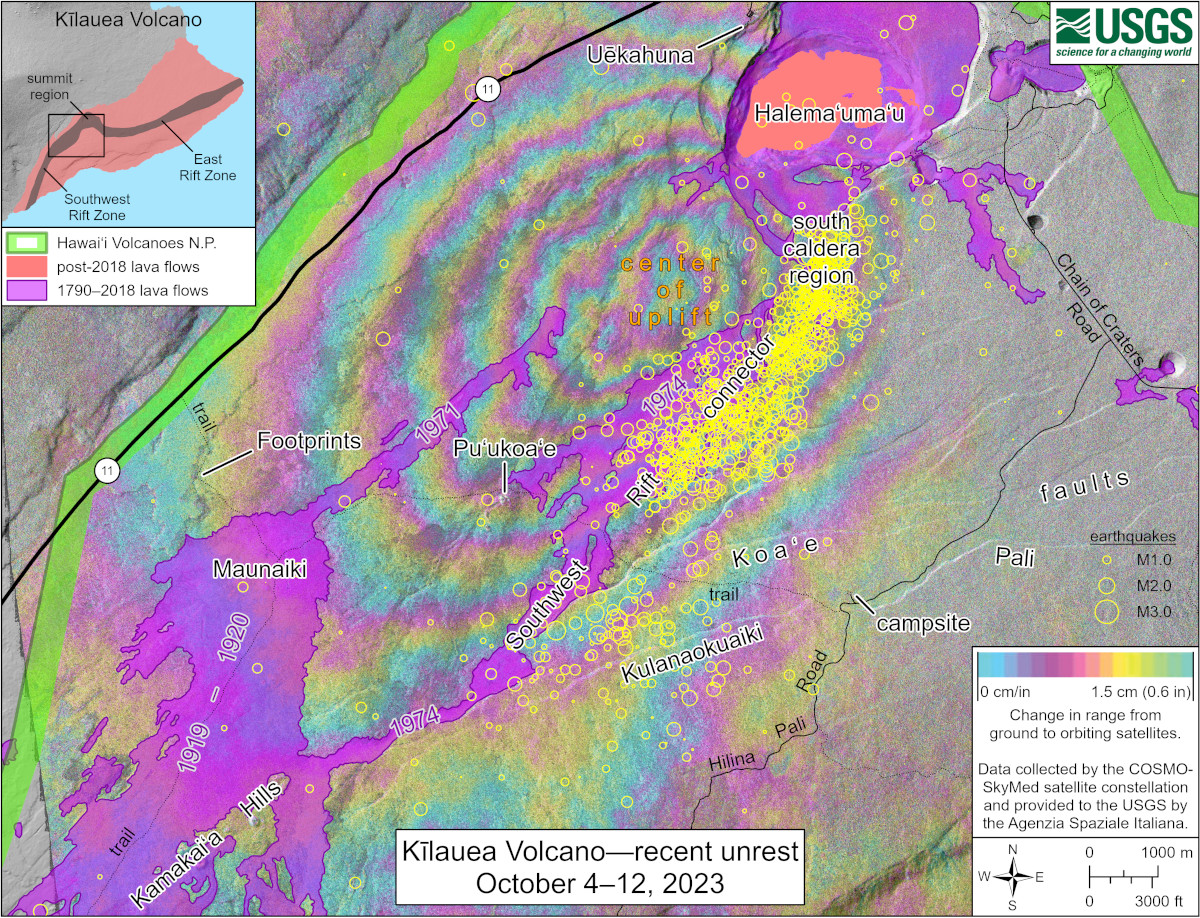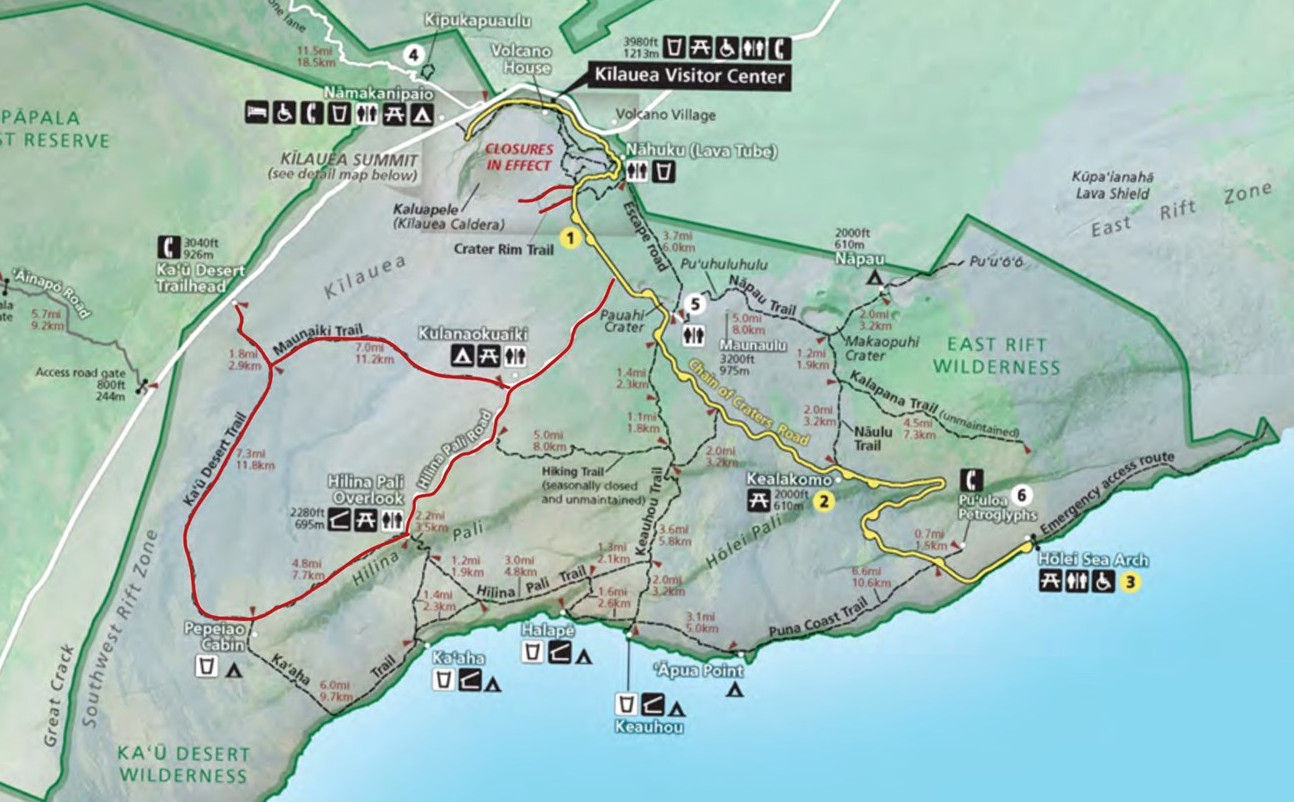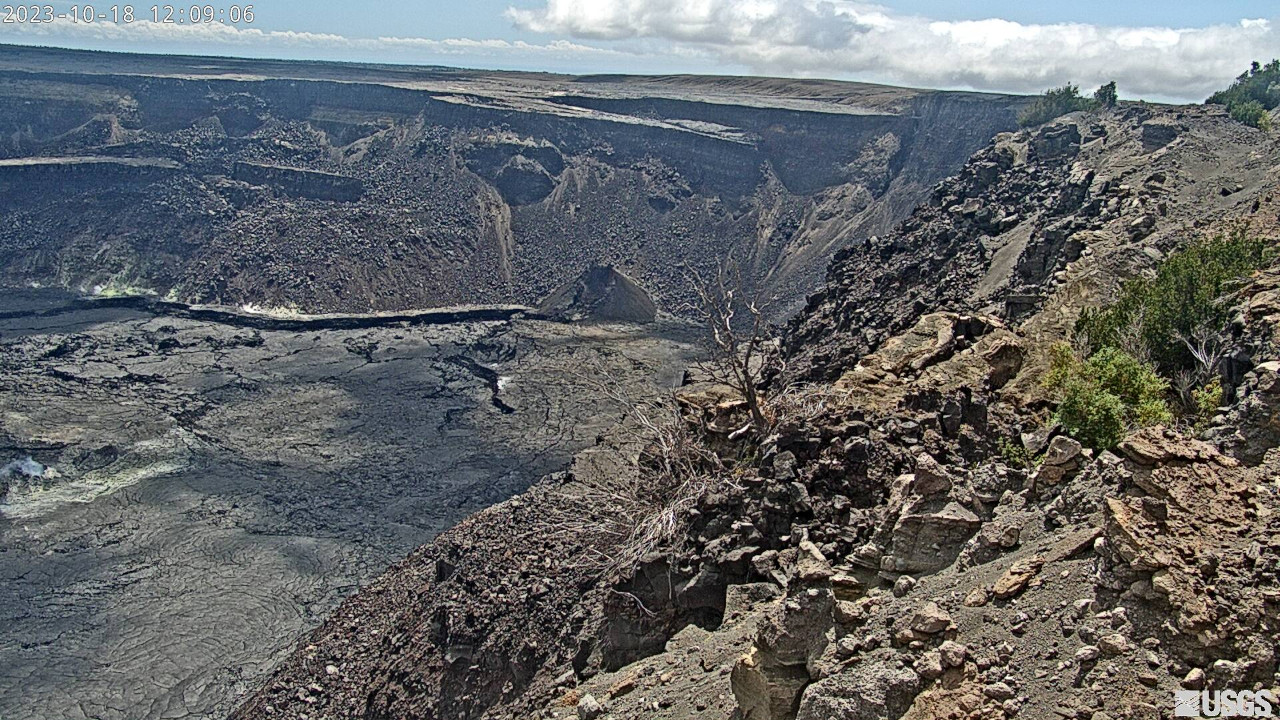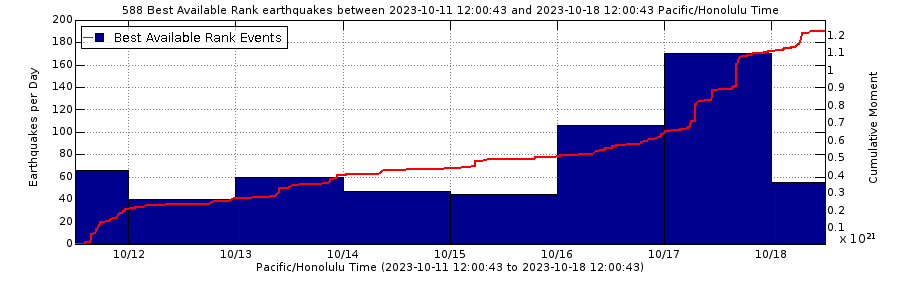(BIVN) – Kīlauea volcano is not erupting. The area to the south southwest of the summit continues to show signs of episodic unrest, as scientists say “the intrusive event that began in early October continues intermittently at a lower rate.”
The USGS Hawaiian Volcano Observatory says the unrest is expected to wax and wane with changes to the input of magma in the area, and eruptive activity is possible in the coming weeks or months.
On Wednesday, scientists wrote a detailed assessment of the current situation in their daily summit observations:
Episodic unrest continues south and southwest of the summit area of Kīlauea. Overall, inflation at the summit of Kīlauea remains high and has surpassed the level seen just before the most recent eruption on September 10th. However, the current rate of inflation in the region have diminished significantly since October 4-6. Waxing and waning of the unrest is expected as this event continues at lower levels of unrest.
Renewed seismicity began on October 16 and continues to be recorded beneath the south end of Kīlauea caldera extending to the southwest along the trend of December 1974 vents. The renewed activity peaked on October 17 and has been slowly decreasing since then. Over the past 24 hours, approximately 86 earthquakes were recorded in Kīlauea summit region. Most of the earthquakes from the seismic swarm south of the caldera are at depths of around 1–3 km (0.6–2 mi) below the surface.
It is unclear how long the current unrest in Kīlauea summit region will continue. At this time, it is not possible to say with certainty if this activity will lead to an eruption; the activity may remain below the ground surface. However, an eruption remains possible, most likely in Kīlauea’s summit region inside of Hawai‘i Volcanoes National Park and away from infrastructure. Similar patterns of earthquake activity and ground deformation occurred to the south of the caldera prior to the September and June 2023 eruptions in Kīlauea summit caldera.

USGS: “This map shows recent unrest in Kīlauea’s summit region. Colored fringes denote areas of ground deformation and yellow circles denote earthquake locations.”
Although unrest in Kīlauea summit region continues, there is currently no sign of an imminent eruption and increasing inflation and earthquake activity (heightened unrest) are expected to precede an eruption. During periods of heightened unrest prior to recent eruptions at Kīlauea summit, signs of imminent eruption did not appear until 1-2 hours before lava reached the surface. The summit of Kīlauea remains at a high level of inflation and eruptive activity is possible in the coming weeks or months. HVO scientists will continue to monitor Kīlauea volcano closely and will issue additional messages as warranted by changing activity.
With the latest assessment from scientists, Hawaiʻi Volcanoes National Park has closed the Mauna Iki Trail and the Kaʻū Desert / Footprints Trail, from the Footprints exhibit to the Mauna Iki Trail intersection.

Hawaiʻi Volcanoes National Park map shows closed trails, overlooks, campgrounds, and roads highlighted in red. Some areas have since been reopened.
The above map was previously published by the National Park Service when a larger area was closed due to the heightened unrest that began in early October.
UPDATE – (2 p.m.) – The National Park Service later clarified that the Footprints exhibit remains open and accessible from Highway 11. “Kulanaokuaiki Campground is open and Hilina Pali Road is open but is closed to vehicles past the campground to the Hilina Pali Lookout due to elevated fire risk,” officials said.
“Safety is always our top priority, and the potential hazards in this region are significant and could include elevated volcanic gases, dangerous lava activity, and damaging earthquakes with very little notice. After any potential eruptive activity occurs, park managers will re-evaluate high hazard areas and access,” said Hawaiʻi Volcanoes National Park Superintendent Rhonda Loh.



by Big Island Video News12:22 pm
on at
STORY SUMMARY
HAWAIʻI VOLCANOES NATIONAL PARK - USGS scientists provided a lengthy update detailing the latest Kīlauea volcano observations and an outlook concerning the current unrest.